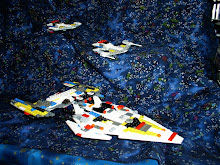Now is a great time for a new computer, to either replace an old workhorse or add a second computer for family use. Just about anything you buy now will do a great job for email, word processing and web browsing.
Sign up for newsletters that computer manufacturer’s publish. Direct to your email, and easy to read. They’ll have the latest deals and price cuts. A few of those links are already on the site.
I also find that good deals can be found on the business side of Dell and HP. In some cases, up to 150 dollars less for a Vostro than an Inspiron with similar specs. For modest computing, like mentioned above, an E2000 series from Intel or AMD X2 is plenty of Central Processing Unit for most people. Look for a CPU in the 2.0 to 2.5 GHZ range. Those are both Dual Core CPUs, meaning they can process two programs at once.
Intel CPUs: Pentium Dual Core, Core Duo, Core 2 Duo, Core 2 Quad, Core 2 Extreme, Core i7, Celeron (single and dual core)
AMD CPUs: Athlon, Athlon64, Athlon X2, Phenom X3, Phenom X4, Sempron (single core)
The CPUs that the casual computer user is looking at are the Athlon X2 and the Pentium Dual Core / Core 2 Duo. Steer away from the lower end CPUs: Celeron, Sempron. Also, the Core 2 Quad, Phenom and Core i7 are too expensive, unless you plan to engage in hypersonic jet fighter studies. (Or if you find a really good deal on those.)
The type of RAM installed won’t make much difference, the important thing is how much is there. Two gigabytes is a minimum for Vista. If the computer you are looking at has less, you can add more later. Most new computers have at least two slots for RAM, some have four. You’ll probably see comptuer with 3, 4, or 6GB of RAM. More is always better.
For hard drive space, I’d say go with at least 160GB. Again, this is a case of more is better….. to a point. I have heard of issues with the very large hard drives, those on the order of 700GB and larger. Not sure I can recommend hard drives that large right now. 320 to 500 is large enough for now.
For most people, onboard video (Intel GMA950, X3100, X4500 or nVidia’s GeForce 6000 and 7000 series) are fine for most people. If you find yourself wanting to do more digital photos or edit movies, you should look into a discrete video card like a GeForce 8500 or higher, or the ATI HD series. You can buy a computer with onboard video and, if it has the appropriate interface, buy a video card later.
Now, a DVD rewritable drive is a standard feature. There can store at least 4.7GB (4700MB) on a disk. Dual layer DVDs can hold twice as much. They can also burn and read CDs, which can store up to 700MB per disk. And you can watch movies with a nice LCD panel. Most computer will have DVD abilities. Blu-Ray is still rather pricey and few machines have it as an option.
LCDs are rather nice. They don’t take up much space, you can hang some of them on walls with hardware, and they come in widescreen versions. That means the ratio of the height to the width matches that of a movie screen. Otherwise, you’ll see black bars top and bottom on a regular screen. You can still play movies just fine on a regular screen.
You might want memory card readers in the computer if you have or are planning on buying a digital camera. That way, you can just remove the card from teh camera and slide it right into the computer. Both XP and Vista will detect the card and ask what you want to do with the files on it.
If you decide to keep the computer in the same room as the internet connection, being wireless isn’t that important for a desktop. But with a laptop, you’re going to have the ability to go wireless. So, you want to have a wireless router. Then you can use your laptop just about anywhere there’s a signal. Range is usually about 100 feet, though that can bee affected by walls.


No comments:
Post a Comment